
Submitted questions will be posted with my response by the following Tuesday or before.
Submitted comments will be moderated and approved within 24 hours.
Resources for Electromagnetic Fields (EMFs)

I put together this list of resources for you regarding EMFs because they are a health concern of equal magnitude to toxic chemical exposure and I want you to get information from experts that are more trained and experienced in this field than I am.
It is especially important to know about EMFs because simultaneous exposure to EMFs and toxic chemicals makes the toxic chemicals even more toxic.
…we have hundreds of pollutants in the air we breathe (indoors and outdoors), the water we drink, the food we eat, and the products we touch. Depending on a number of factors, some or most of these potential toxins can enter the bloodstream. Under full body high power flux RFR, these toxins can penetrate the various blood-organ barriers normally impermeable to them. Other types of barriers can be penetrated as well, and the protective compartmentalization of the body can become very dysfunctional. However, to display the full extent of these adverse effects in safety studies, where the RFR is functioning as a promoter/enabler, experiments are required to include these other toxic stimuli in combination with the RFR.
— “Radio Requency Radiation (RFR) as a promoter/Enabler of Adverse Health Effects”
So in addition to creating a home that is free of toxic chemicals, I also encourage you to learn about EMFs and create a home that minimizes EMF exposures as much as possible.
Here are some resources recommended to me by experts. Please let me know if you know of additional resources that should be added to this list.
FORUMS WHERE YOU CAN ASK QUESTIONS:
https://www.electricsense.com/forum/
es-forum.com
WEBSITES:
http://ehtrust.org/
http://emfanalysis.com/
https://www.saferemr.com/2016/04/cell-phone-and-wireless-technology.html
http://www.es-uk.info/
http://www.emfrelief.com/
https://search.mercola.com/results.aspx?q=EMF#stq=EMF
https://maisonsaine.ca/english/
METERS, SHIELDING and OTHER EMF-REDUCING PRODUCTS:
INTERVIEWS I’VE DONE WITH EMF EXPERTS ON TOXIC FREE TALK RADIO:
- ORAM MILLER: EMF Basics: Radio Frequencies
- ELLEN MARKS: You Have a Right To Know About the Dangers of Cell Phones
- Dr. DEVRA LEE DAVIS, M.P.H., Ph.DHow Cell Phones Harm Your Health and How to Stay Safe
- ELLEN MARKS: Berkeley’s Proposed Cell Phone “Right to Know” Ordinance
- RICHARD H. CONRAD, PhD: Living With Electromagnetic Hypersensitivity (EHS)
- OLLE JOHANSSON: Health Effects of Modern Man-Made Electromagnetic Field and Functional Impairment Electrosensitivity
- SUZANNE AND JAMES MCCONNELL: Protect Your Health From EMFs with Clothing That Shields Your Body
- ELLEN MARKS: Cell Phones, Brain Tumors, Labeling and Your Right to Know
- ORAM MILLER: Watch Out for Wi-Fi in Everything
- DR. RYAN MCCAUGHEY AND DR. RONG WANG: How to Protect Your Body From Your Cell Phone
- LAWRENCE J. GUST: How Bau-Biology Can Help Cure Your Sick Home
- ANDRE FAUTEUX: Electrosensitivity and Smart Meters
Independence from Toxic Chemicals

Tomorrow is Independence Day, so I’m taking a holiday from website work this week to celebrate one of my favorite holidays of the year.
Independence Day has a special meaning for me because I am descended from nine Patriots who fought in the Revolutionary War for our freedom. My grandmother and great aunts were members of the Daughters of the American Revolution, so in my family, freedom was something to be honored and celebrated.
Some years ago I wrote a piece about independence that I want to share with you today. Every year I bring this out again, because independence as a concept is so important to me, and particulary independence from toxic chemicals in consumer products.
* * * * *
For me, Independence Day is about more than having a picnic and going to the fireworks (usually we have both picnic and fireworks, but today it looks like we might be rained out). It’s a time to bring my attention again to the concept of independence in my own life, and for the nation in which I live.
I love the Declaration of Independence.
“We hold these truths to be self-evident, that all men are created equal, that they are endowed by their Creator with certain unalienable Rights, that among these are Life, Liberty and the pursuit of Happiness.”
This is the idea that our country was founded on. This is the idea that men and women fought for and gave their lives for, that we should have Life, Liberty, and Happiness.
Life is not just an individual human being alive. Life is the whole of life that supports each individual organism. We have not just the right, but in the words of our forefathers, the unalienable right to be alive as individuals and to have all of Life there to support our individual lives.
Today, the primary attention of our nation is on the industrial economy. How different things would be if our first priority as a nation was to ensure that Life is sustained.
What is independence?
Here is part of a dictionary definition:
- not subject to control by others : self-governing
- not affiliated with a larger controlling unit
- not requiring or relying on something else
- not looking to others for one’s opinions or for guidance in conduct
- not requiring or relying on others (as for care or livelihood)
- showing a desire for freedom
Each entity must have the freedom to be independent, the freedom to govern themselves. to make decisions in their own best interest and in the best interest of all Life. Each individual person, each individual relationship, each individual household, each individual business, each individual community, each individual town, each individual state, each individual nation. We must claim independence for ourselves and grant it to others.
At the same time, we must recognize that we are also interdependent, that our life, liberty and happiness depends on every other living organism having their life, liberty, and happiness. Every one. Birds and trees and fish and butterflies and all other living things in addition to humans.
We are both our independent selves as individuals AND interdependent with all the rest of life.
This is what I remind myself of on Independence Day.
USHISTORY.ORG: The Declaration of Independence Has the full text of the Declaration, along with profiles of the signer, Thomas Jefferson’s account of the writing of the Declaration, and more.
THE CO-INTELLIGENCE INSTITUTE: Interdependence, Interdependence Days and Declarations of Interdependence Discusses independence and interdependence and gives a history of Declarations of Interdependence, along with links to them.
* * * * *
Now I also want to say that independence has everything to do with living toxic free. Manufacturers need freedom to make toxic-free products and we need freedom to choose them.
We CAN be free from the harmful effects of toxic chemcials by exercising our human right to make the choices that lead to that freedom. We can make our own choices to have life, liberty, and happiness.
Happy Independence Day!
Naturepedic Crib Mattress Questions
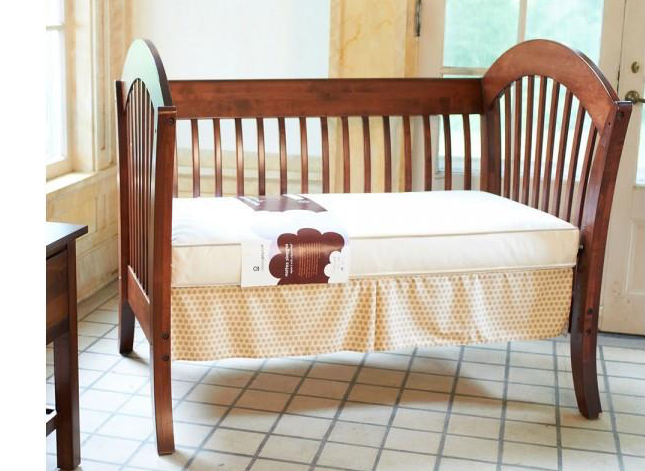
Question from Sophia
Hi Debra,
I’m looking to purchase a Naturepedic crib mattress and want to ask you your opinion.
What is the best nontoxic option between the two following options?
option 1) The ‘polyethylene’ fabric that coats the Organic Cotton 2 in 1 Ultra/Quilted Crib Mattress ( U.S. Patent No. 9,259,096. Other patents pending.)
https://www.naturepedic.com/our-products/baby/baby-crib-mattresses/quilted-series/organic-cotton-2-in-1-ultra-quilted-252-crib-mattress
option 2) the organic waterproof Pads featuring “Drysleep TM” technology which is a “polyurethane waterproof barrier”?
https://www.naturepedic.com/info/drysleep
If you’re able to describe the differences between the two and the relative pros and cons it would be much appreciated.
Also, is there any point to getting an organic natural fibre mattress when you have to put a plastic mattress protector on top to make it waterproof? Why not get a normal mattress and just wrap it in polyethylene ?
Thanks so much!
Debra’s Answer
To answer your toxicity question, both polyethylene and polyurethane film (not polyurethane foam) are about the same in terms of toxic exposure: infinitesimal. If I had to choose one to be less toxic it would be polyethylene because it is a very simple plastic and Naturepedic’s polyethylene is made from non-GMO sugar cane, not petroleum.
A few years ago, Clean Production Action developed The Plastics Scorecard, which evaluates the hazardous effects of various plastics. Polyethylene is one of the “most benign” plastics.
To answer your other question, I asked Naturepedic founder Barry Cik to explain in his own words. And here’s what he said…
Excellent questions. Let’s go through this step-by-step:
A. Why should a crib mattress be waterproof?
Babies have accidents. Whether it’s urine or bigger messes or spilled milk or whatever, if the mattress is not totally waterproof and easy to clean, you’ll be growing a garden filled with microbes, bacteria, etc. This is not a healthy environment for a baby.In former times, you put straw down for the baby to sleep on. And when the straw was no longer usable, you took away the straw and put down new straw. But we don’t live in that world any longer. Today everyone wants a mattress, and the mattress must last for a long time. So there is no choice but to waterproof the mattress if you want to maintain hygienic conditions.
B. What’s the most non-toxic waterproofing for a crib mattress?
Polyethylene wins hands down. According to a review of polymers (plastics) done by Clean Production Action, the conclusion for polyethylene is “For each manufacturing step, no core chemical inputs are chemicals of high concern as defined by GreenScreen Benchmark 1.” (See the attachment)In Naturepedic products, the waterproofing is food-grade polyethylene, which means that it meets the FDA standard for food-contact, and, further, it’s made from sugarcane. As well, the sugarcane is non-GMO.
C. So why is polyurethane used in some products?
There is no polyurethane in any Naturepedic mattresses. All Naturepedic mattresses are waterproofed with polyethylene. But there are some other products that can’t use polyethylene for waterproofing. In particular, waterproof protector pads that are continuously put into the washing machine and dryer fall apart quickly if waterproofed with polyethylene. So, for waterproof protector pads, Naturepedic uses a clean polyurethane, free of many toxic chemicals (and the polyurethane is not even visible on the surface as it’s a very small amount added to the interior of the pad, just enough to make the pad waterproof). This is approved by the Global Organic Textile Standard (GOTS) and meets the GOTS non-toxic standard.D. If polyethylene is so wonderful, why not just get a regular crib mattress and wrap it in polyethylene?
Some people do exactly that. (I noticed that the question is coming from someone in Australia – and wrapping crib mattresses in polyethylene is done quite a bit in New Zealand and perhaps also in Australia, and this does greatly help in preventing babies from coming into contact with a number of poisons.)
That said, it’s one thing to use polyethylene to shield the baby from various poisons. But, if you can get the whole mattress to be free of all these poisons, why put your baby on a “regular” mattress to begin with, even with the polyethylene wrap?
With Naturepedic crib mattresses, you get the entire mattress approved and certified to the GOTS standard. Naturepedic crib mattresses are not made with vinyl (PVC), phthalates, ethyl vinyl acetate (EVA/PEVA), perfluorinated chemicals (PFCs), polyurethane foam, chemical flame barriers or any other flame retardant chemicals, latex (a potential allergen for babies, even if natural/organic), formaldehyde, pesticides, GMOs, glues/adhesives, etc. And then, as well, the waterproofing is food-grade polyethylene made from non-GMO sugarcane.
Note: The question also refers to the 2-in-1 Ultra/Quilted Crib Mattress. This is waterproof on one side and quilted, but not waterproof, on the other side. This model is made for people who generally want the waterproof side for infants, but then are comfortable using a non-waterproof quilted surface for a toddler. This is a personal decision, but we always recommend using a waterproof crib surface, or a waterproof pad placed over a non-waterproof surface, if there is a chance of leakage into the mattress. As stated up front, we do not recommend taking chances when it comes to hygiene.
Finding Upholstery Fabrics Without Fire Retardants
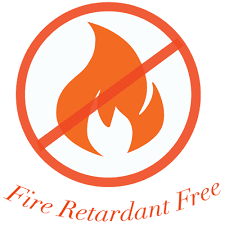
Question from Allen
Hi Debra,
Thanks for dedicating your website to toxic free! I have been looking for a fabric that is not treated with stain finish or fire retardants. It looks like even 100% wool upholstery fabric is treated with FR, at least those from eBay who sell discounted fabric from design houses.
I came across this link and it says, “TB117-2013, implemented in 2015, allows for safer, healthier furniture: Stops furniture fires where they start (on fabrics of upholstered furniture)”. I read this to mean that fabrics are still treated with FR? The only place I’ve found that doesn’t is two sisters, but their fabrics are VERY expensive. Can you confirm?
http://greensciencepolicy.org/wp-content/uploads/2017/03/Buying_FR-free_furniture.pdf
Debra’s Answer
There are two issues here.
First let’s clear up TB117-2013. All it contains is the instructions for doing the flammability test.
Here’s a simple summary of TB117-2013.
The big change is that the flammability test is now done on the COVER instead of the FOAM. So the test can be passed without adding fire retardant to the foam. They still test the cover and foam together, but the burden of flammability is now on the cover, where the smoldering cigarette would fall.
The big benefit is that furniture can now meet the flammability standard without flame retardants. But it does not ban the use of flame retardants.
But here is the problem.
I did a quick search on “wool uphostery fabric” and found, as an example, this link
https://www.insidefabric.com/p-1316741-cheviot-venetian-brown-by-abbeyshea.aspx
Under flame retardants it says “California Technical Bulletin 117 Section E- 2013 NFPA 260 Class 1.”
I’m seeing that on other upholstery sites too, such as this one, which allows you to search by different flammability requirements. https://www.robertallendesign.com/all-products/fabric/shopby/fab_flameretardancy-ufac_class_1.html
I called both retailers. Both said that this means that the fabric will pass the flammability standards listed for the fabric. One said they even have their own lab that tests the flammability of fabrics in-house.
It does NOT mean no flame retardants. In fact, these two retailers did not know how or why the fabrics pass. They could be inherently flame resistant or chemical flame retardants could be added.
In fact, these companies and others have no interest in flame retardants. They both said they would need to call the manufacturer to find out if any given fabric had flame retardants added. It’s not part of their standard database information they keep on fabrics.
Here a short article that summarizes the flame retardant properties of various fabrics.
On the Fabrics page of Debra’s List. I’ve listed websites that sell natural upholstery fabrics and are aware to toxics issues. In addition to Two Sisters EcoTextiles there is also Envirotextitles and Natural Uphosltery. These are the types of places that can help you find the toxic free fabrics you are looking for.
A Pretty Comprehensive Overview of Nail Polish—Both Bad and Better
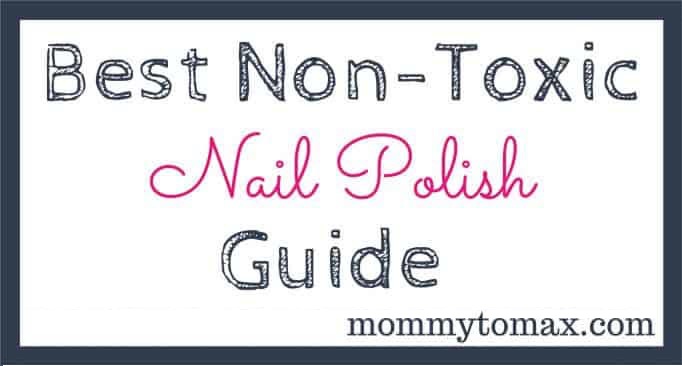
Last week I received an email from a “nontoxic mommy blogger” asking if I would take a look at her upcoming post about nail polish.
I was impressed with her thorough research into the toxic chemicals used in nail polish and her review of the safer brands.
What I didn’t agree with was I felt that she didn’t give enough emphasis to the fact that even the “safe” brands aren’t really safe.
And you know what? She edited her post to include my viewpoint.
I’m really pleased she reached out to me and hope others will too. I’m happy to discuss and review because I want accurate information out in the world.
I’m very happy to see there is a new generation of nontoxic writers coming up who can continue to carry the torch when I’m ready to pass it on.
This is a great piece on nail polish. Well done, Lotus!
Cotton Compression Hose
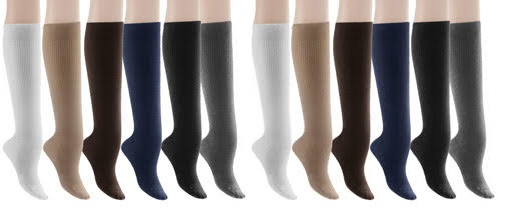
Question from Bonnie Johnson
Hi Debra,
I was just told by my cardiologist that I need to start wearing compression hose to help with a heart issue. Are there any safe ones? Cotton? I have seen some but they are nylon and spandex. Not sure what to do.
Debra’s Answer
There IS cotton compression hose. Here’s one example:
http://www.foryourlegs.com/Sigvaris-151C-Sea-Island-Cotton-15-20-mmHg-Womens-Knee-Highs-p-17688.html
There are also cotton hose liners specifically to wear inside compression hose for comfort.
https://www.brightlifedirect.com/biacare-cotton-liners.asp
They are easy to find online
Just search on “cotton compression hose and websites will come up that sell both.
Toxics Issues Move Forward and Backward in the World
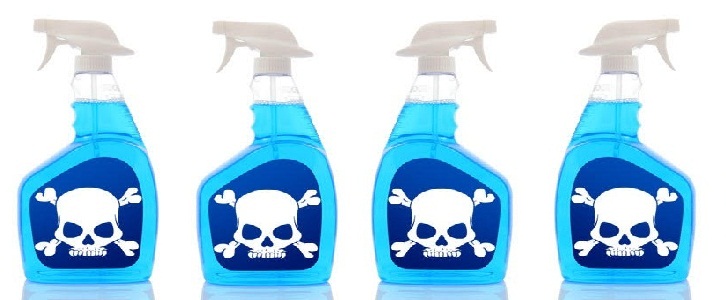
In this morning’s email I received two announcements. One showing progress on the toxics front and then other…what’s the correct word for “opposite of progress”?
Bad news first. The New York Times reported that the federal government is scaling back the way health and safety risks associated with the most dangerous chemicals on the market will be determined.
Under The Frank R, Lautenberg Chemical Safety for the 21st Century Act (signed into law in 2016), the E.P.A. was required for the first time to evaluate hundreds of potentially toxic chemicals and determine if they should face new restrictions, or even be removed from the market. The chemicals include many in everyday use, such as dry cleaning solvents, paint strippers, and substances used in health and beauty products like shampoos and cosmetics.”
“But as it moves forward reviewing the first batch of 10 chemicals the E.P.A. has in most cases decided to from its calculations any potential exposure caused by the substances’ presence in the air, the ground or water…Instead, the agency will focus on possible harm caused by direct contact with a chemical in the workplace or elsewhere.”
On the brighter side. the State of New York now has a Household Cleansing Product Information Disclosure Program, that requires manufacturers of cleaning products to post their product ingredients on Internet web sites by July 2019, with further details to be added by July 2020 and January 2023. Exceptions are allowed for trade secrets.
California already has a similar program SB-258 Cleaning Product Right to Know Act of 2017. This law requires known hazardous chemicals in home and commercial cleaning products to be listed on labels and online.
Manufacturers have until 2020 to disclose ingredients online and until 2021 to list them on labels.
While all of this study of chemicals and disclosure of toxic ingredients is good to do, in the meanwhile each of us can take action to choose products that are not made with these chemicals right now, today. The toxic-free products exist, we just need to choose them.
THE NEW YORK TIMES: The Chemical Industry Scores a Big Win at the EPA
TIMESUNION: Home cleaning products must reveal chemicals, potential health impacts to state
Natural Sunscreen 2018

Every year about this time everyone writes about sunscreen, so I I write a new post about sunscreen, too. And I received a question about it this week, so…
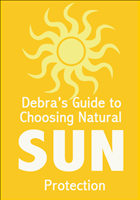 First, please read Debra’s Guide to Choosing Natural Sun Protection. Though I wrote it some years ago, it still has the best advice I can give on this subject: don’t wear sunscreen, and don’t wear sunglasses. But there other things you can do that are very effective. I lived in Florida for sixteen summers and I never had a sunburn.
First, please read Debra’s Guide to Choosing Natural Sun Protection. Though I wrote it some years ago, it still has the best advice I can give on this subject: don’t wear sunscreen, and don’t wear sunglasses. But there other things you can do that are very effective. I lived in Florida for sixteen summers and I never had a sunburn.
Every year I also take a look at EWG’s Guide to Sunscreens. There is a lot of good information here about what’s wrong with sunscreens, but I just don’t agree with many of their recommendations.
I suggest listening to a show I did on Toxic Free Talk Radio called Things You Should Know About Sunscreen, But Probably Don’t. My guest was Michael J. Russ, President of Oceana Naturals, author of Sun Care Decoded . At the time of this interview he was the authorized US distributor for MelanSol 100% natural sunscreen (his website is no longer up, but you can still purchase MelanSol here. Still titanium dioxide, but the rest of the ingredients are 100% natural. If you want to use a lotion, this is the most natural I’ve found.
If you don’t want to use lotion, see Q&A: Natural Sun Protection Without Lotion.
Even Dr Oz says don’t use sunscreen.
And now, scientists warn that wearing sunscreen is “not a reliable way to prevent getting skin cancer.”
Read my guide for sun protection that is both safe and effective.
Is there a PVC-free Kid’s Pool?
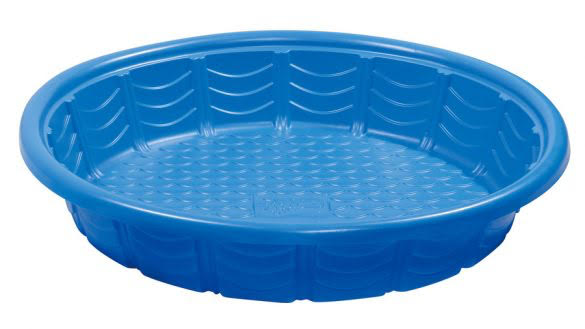
YES! They have hard sides and are made of my favorite plastic—polyethylene!
Question from Romina
Hi Debra,
Do you know of any PVC-free kids pool besides the small hard side baby pools?
My kids are 3 and 5 and looking at a small to medium inflatable pool, but cannot find any option that doesn’t have PVC.
Thanks.
Debra’s Answer
I don’t have kids, but some moms who do have been asking and answering this very question.
I actually found a blog post that said they found a kiddie pool made with one of my favorite plastics—polyethylene! Polyethylne pool toys too! DAILY PEA: A Wading Pool Free of BPA, PVC and Phthalates—Affordable Too.
I had a difficult time finding these online, maybe because they are like an elephant to ship, but I’ve read they are sold at places like Walmart, Target, and Toys R Us, so call around.
Here are more posts about finding PVC-free pools.
THE SOFT LANDING: HOW TO CHOOSE PVC-FREE POOLS, FLOATIES, TOYS AND LIFE JACKETS
RAISING NATURAL KIDS: Safer Pools and Water Toys
Aerotoxic Association Calls For International Investigation Into Health Effects Of Toxic Air In Planes

In July 2015 I interviewed a former flight attendant on Toxic Free Talk Radio regarding aerotoxic syndrome—a condition caused by toxic chemical exposure during airplane flights. TOXIC FREE TALK RADIO: Aerotoxic SyndromeL How Flying in Airplanes can Affect Your Health.
Then in January 2017 I posted a link to the GreenMedInfo investigative report on toxic exposures in the aviation industry and other related documents in Q&A: More on Aerotoxic Syndrome.
In June 2017 I posted even more about the subject in Q&A: More on Toxic Air in Airplanes.
And now, this week, the Aerotoxic Association called for an independent public inquiry into the possible technical solutions to contaminated air on planes. An “Independent Public Inquiry at the International Criminal Court in The Hague into all the evidence, for and against, of the impact of toxic cabin air in aircraft.”
““Our hope is that the court will consider all the evidence on this matter and realise that, based on the precautionary principle, it is vital that the known solutions to this problem in terms of air filtration systems are made mandatory in all aircraft that use ‘bleed air’ for their pressurised cabin air.”







